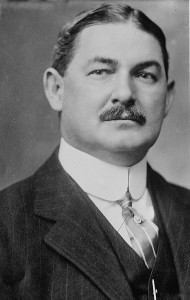125 Years Ago Today William Kemmler Became The First Prisoner To Be Put To Death By Electrocution

The original and first electric chair that was used to execute a prisoner on August 6, 1890 in Auburn, NY. The chair was destroyed in a prison riot and fire on July 28, 1929.
While the debate continues today over what exactly comprises cruel and unusual punishment or whether the death penalty should ever be invoked, 125 years ago today on August 6, 1890 William Kemmler became the first person put to death by the electric chair. The electric chair was proposed to be a more “humane” way to execute criminals.
On June 4, 1888 New York’s Governor David B. Hill signed a law passed by the legislature that the punishment for murder after January 1, 1889 should be “death by means of an electrical current that should be caused to pass through the body of the condemned.” Electrical experts then came up with the plan to apply the current and strap a man in a chair while he sat.
The New York Evening World wrote of the convict Kemmler on the day of his execution, “If vengeance were what the law seeks by capital punishment for murder it would get little satisfaction out of the event today, for the poor wretch whose life has been taken within the walls of Auburn Prison has for weeks awaited the coming of black-visored Death with a child-like expectancy, almost impatience.”
One of eleven children, William Kemmler was born into poverty on May 9, 1860 in Philadelphia, PA. Continue reading














